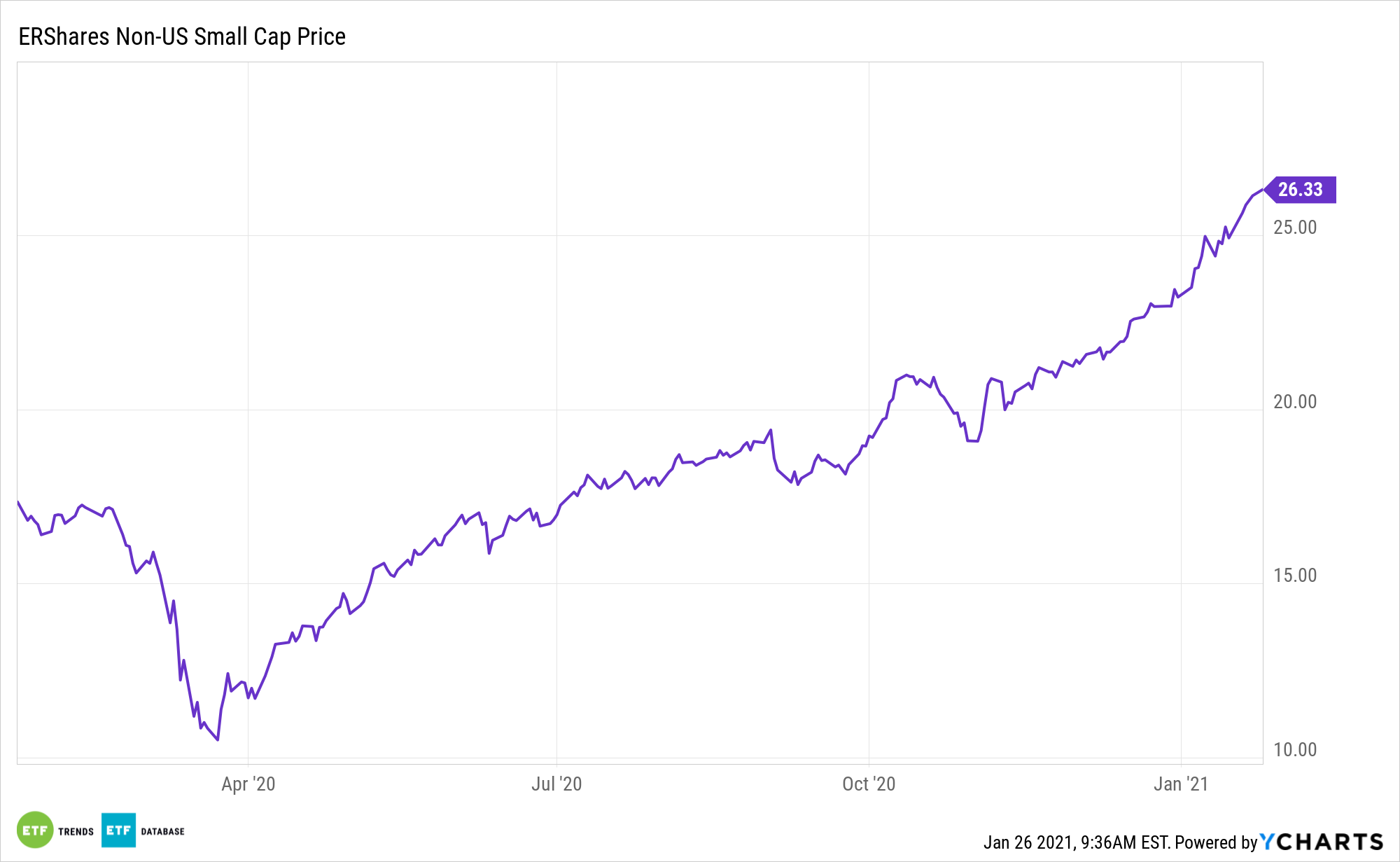With all the excitement surrounding domestic small caps, it’s easy to lose sight of opportunities with smaller international equities. Thanks to the ERShares International Equity ETF (NYSEARCA: ERSX), investors don’t have to choose.
ERSX selects the most entrepreneurial, primarily Non-US Small Cap companies, that meet the thresholds embedded in its proprietary Entrepreneur Factor (EF). ERShares’ ETF delivers strong performance across a variety of investment strategies without disrupting investors’ underlying risk profile metrics. Their geographic diversity enables them to harness global advantages through additional returns associated with currency fluctuations, strategic geographic allocations, comparative trade imbalances, and relative supply/demand strengths.
With the global economy on the mend, ERSX’s ex-US exposure is relevant over the near-term.
“Although they’ve performed well for decades, international small caps have been out of favor for at least 10 years,” writes Seeking Alpha. “Mean reversion and valuations present opportunity for long-term outperformance.”

The Importance of ERSX Ex-US Exposure
Small cap investors already know that looking at equities outside the large cap universe can yield substantial gains, but one area they may not have considered is looking abroad.
International small caps have “generated annual returns of only 6.7% for the past 10 years compared to 14% for the U.S. Large Company Index (per IFA data). However, valuations are attractive and there are two emerging catalysts that could propel the sector to outperform U.S. large caps in the coming years,” according to Seeking Alpha.
International small caps are generally export-oriented, globally structured, innovative, and have a high to dominant share of a niche market, often one in which the U.S. counterparts don’t compete effectively.
“International small caps have demonstrated a clear performance superiority coming out of recessions and bear markets. For example, for the two most recent recoveries beginning in 2009 and 2002, the international small-cap index gained an average of 221% in the subsequent five years versus a gain of 143% for the U.S. large cap index,” concludes Seeking Alpha. “Since the end of March, near the pandemic trough, international small caps are up 46% versus 42% for U.S. large caps.”
For more on entrepreneurial strategies, visit our Entrepreneur ETF Channel.
The opinions and forecasts expressed herein are solely those of Tom Lydon, and may not actually come to pass. Information on this site should not be used or construed as an offer to sell, a solicitation of an offer to buy, or a recommendation for any product.

